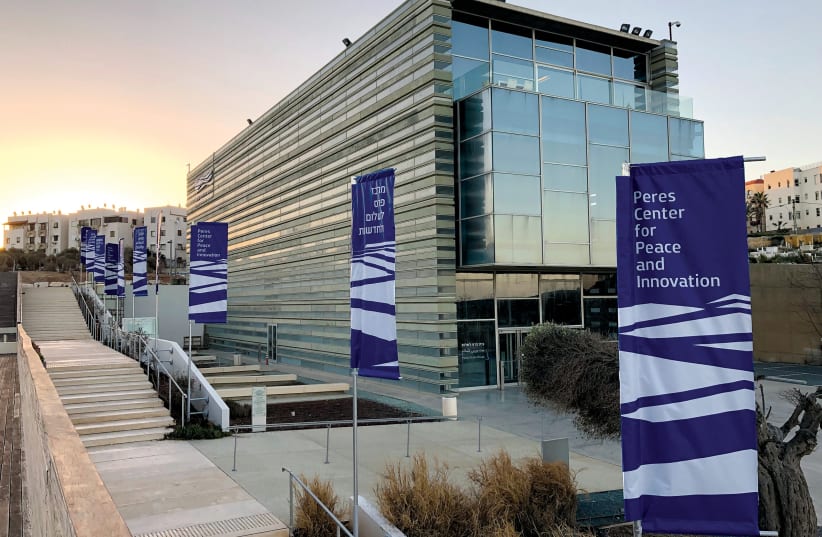You may not have noticed but it’s pretty hot in Tel Aviv these days. Walking into the air-conditioned Peres Center for Peace & Innovation on the beachfront in Jaffa is a welcome break from the heat.
Outside the building there is a huge sign reminding you to “Dream Big.” Inside the lobby of the modernist building with amazing views of the Mediterranean are giant screens in what is called “The Hall of Inspiration.” They show the global innovations that were born in Israel, from drip irrigation to the heart stent.
It is only possible to explore the Peres Center on a guided tour, which takes about 90 minutes and can be booked online.
The guided tour
The first stop is the Secrets of Innovation Room, where you can chat with one of 18 life-size innovator holograms in various fields including agriculture, cybersecurity and medicine. The chat is interactive – you can choose whether you want to hear about their idea, their dream, or the way they reached their goal, and the holograms are incredibly lifelike. There were men and women, Jews and Arabs, who have all contributed to Israel’s hi-tech ecosystem. We spent about 20 minutes there and could have spent much longer.
We then visited a replica of Shimon Peres’s office where he worked both before and after he served as the ninth president of Israel from 2007 until 2014. There is even a replica of Peres’ Nobel Peace Prize, which he won in 1994 along with Prime Minister Yitzhak Rabin and Palestinian leader Yasser Arafat.
The NGO’s offices upstairs are where Peres actually worked, and where the originals of most of the artifacts are kept.
From there you go to the Innovation Nation Room. There are interactive games and a timeline that shows how Israel became the Start-up Nation. You can learn about different Israeli innovations including the miniature camera in a pill that can be swallowed.
Then we moved on to the part that my 18-year-old son enjoyed the most. Called the Capsule, it was a virtual reality experience where you can play futuristic games in which you can design the city of the future, travel into space, or perform medical procedures. The tour guide warned anyone with epilepsy or who was pregnant not to do it. I found it made me a little dizzy, but my gamer son loved it.
“It was pretty advanced virtual reality,” Mishael said. “It was well made and had a lot of detail. I thought it was a good way to learn in an interesting fashion.”
“It was well made and had a lot of detail. I thought it was a good way to learn in an interesting fashion.”
Mishael
The last section, called The Israeli Expo, highlights various Israeli companies and what they are doing today. Like the rest of the museum, it is interactive. Mishael was especially impressed with CorNeat, an Israeli start-up that makes artificial corneas that can help some blind people see again. Another company showcased is Aleph meat, which clones meat cells to produce meat.
The Peres Center for Peace
The Peres Center for Peace was originally created as an NGO in 1996 to bridge gaps between Israelis and Palestinians, between Israeli Jews and Israeli Arabs, and between rich and poor in Israel. The programs ranged from joint Israeli-Palestinian soccer teams to leadership and entrepreneurial programs.
“Peres understood that he can’t promote his peace efforts only from the top down – he needed a bottom-up approach,” Lital Kiperman Vaknin, head of Innovation and Strategic Partnerships Department, told The Report in an interview. “He saw innovation as a tool that enables promoting his vision to bring people together. Science and technology offer opportunities to collaborate.”
Shimon Peres died in 2016, and the Peres Center for Innovation was opened in 2019, a year before the pandemic began. It originally offered tours and interactive content in four languages: Hebrew, Arabic, English and Chinese, as many Chinese tourists and business delegations came to visit. Kiperman Vaknin says that many people both inside and outside Israel wanted to see the Start-up Nation, but there was no place to go except for the offices of the individual companies. The Peres Center offers that place – and with an amazing view of the Mediterranean at the same time. ■
